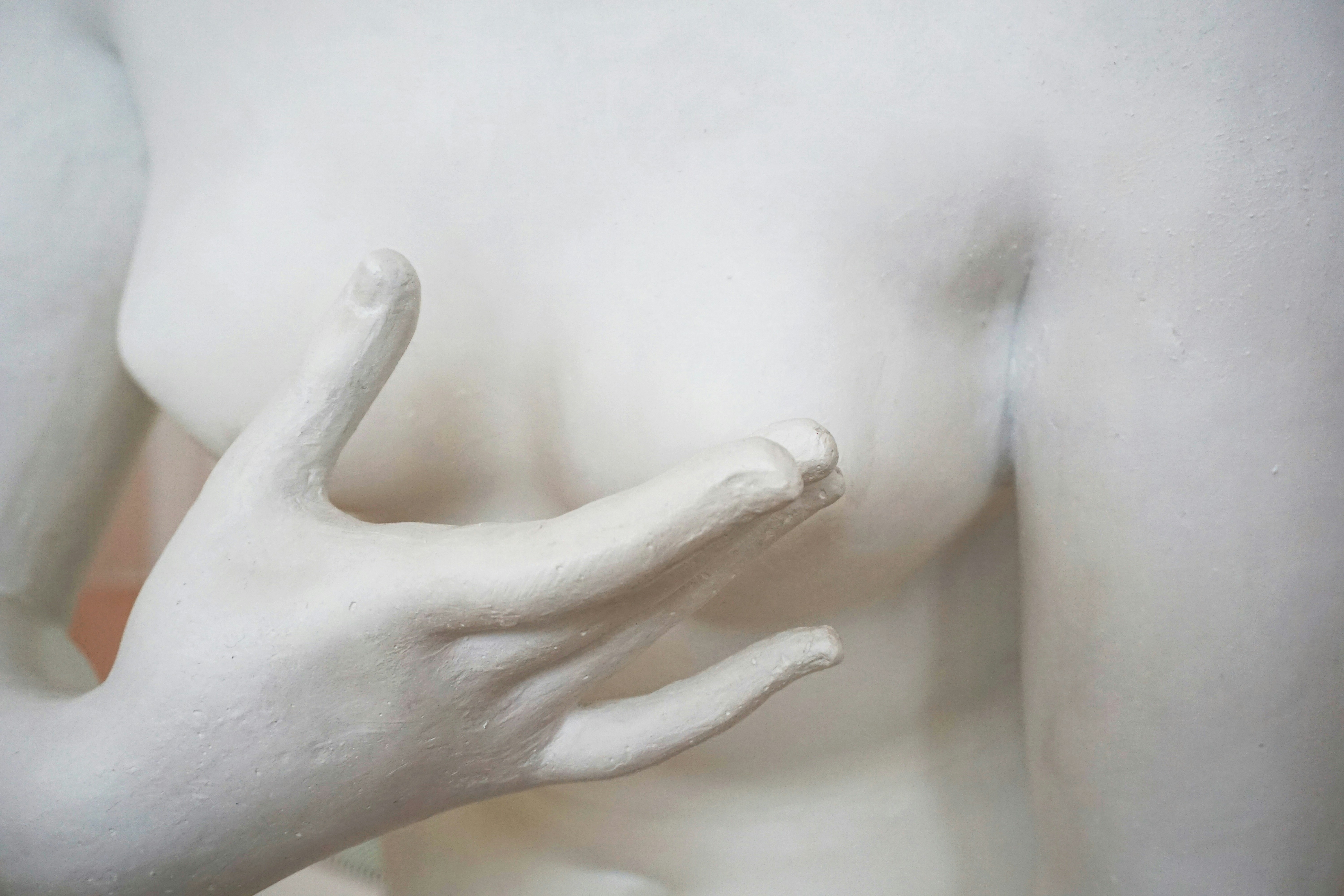乳腺外科における乳がんの診察に関する会話例と英語フレーズ
**乳がん(Breast Cancer)**は、乳腺に発生する悪性腫瘍であり、女性において最も一般的ながんの一つです。早期発見と治療が重要であり、診断や治療方針について医師と患者が詳細に話し合う必要があります。
この記事では、乳がんの診察に関連する会話例と、それに関連する英語表現を紹介します。
患者の設定
- 名前: Emily Roberts(45歳、女性)
- 主な症状: 右胸にしこりを発見し、乳がん検診を受けた結果、再検査を勧められた。
- 既往歴: なし
- 生活習慣: 週に数回運動をしており、バランスの良い食事を心がけているが、家族歴に乳がんがある。
1. 初診での問診と症状の確認
乳がんの診察では、乳房に触れるしこりや異常、家族歴などを確認し、再検査や精密検査が必要かを判断します。
会話例: 症状の確認
Doctor:
“Good afternoon, Ms. Roberts. I understand you’ve recently found a lump in your right breast and were advised to have further tests. Could you tell me more about when you first noticed the lump and any other symptoms you’ve experienced?”
(こんにちは、ロバーツさん。右胸にしこりを発見され、再検査を勧められたと伺いました。このしこりに気づいたのはいつ頃ですか?また、他に気になる症状はありますか?)
Patient:
“I first noticed the lump about three weeks ago during a self-exam. It doesn’t hurt, but it feels firm and hasn’t gone away.”
(3週間ほど前に自己検診中に気づきました。痛みはありませんが、固く感じて消えません。)
Doctor:
“Have you noticed any changes in the appearance of your breast, such as dimpling of the skin or changes in the nipple?”
(乳房の外観に変化、例えば皮膚のくぼみや乳頭の変化などはありましたか?)
Patient:
“No, I haven’t noticed anything like that.”
(いいえ、そのような変化は特にありません。)
2. 家族歴やリスク要因の確認
乳がんの診断において、家族歴や遺伝的なリスク要因は重要です。これに基づいて検査や治療方針を決定します。
会話例: 家族歴やリスク要因の確認
Doctor:
“Do you have a family history of breast cancer or other types of cancer?”
(乳がんや他のがんの家族歴はありますか?)
Patient:
“Yes, my mother had breast cancer in her late 50s, and my grandmother on my father’s side also had breast cancer.”
(はい、母が50代後半で乳がんになり、父方の祖母も乳がんを患っていました。)
Doctor:
“Given your family history, we’ll want to consider a genetic test to see if you carry any mutations, such as BRCA1 or BRCA2, that increase your risk of breast cancer.”
(家族歴を考慮すると、乳がんのリスクを高めるBRCA1やBRCA2の変異があるかどうか確認するために、遺伝子検査を検討する必要があります。)
Patient:
“Would knowing that affect my treatment options?”
(その結果が治療法の選択に影響しますか?)
Doctor:
“Yes, if you carry one of these mutations, we might recommend more aggressive screening or preventive measures, and it could also influence your treatment plan.”
(はい、これらの遺伝子変異がある場合、積極的な検査や予防策を推奨することがありますし、治療計画にも影響を与える可能性があります。)
3. 診断と検査の説明
乳がんの診断には、マンモグラフィーや超音波検査、場合によっては生検が行われます。検査の目的や次のステップを説明することが重要です。
会話例: 検査の説明
Doctor:
“We’ll need to perform a mammogram and an ultrasound to get a clearer view of the lump. If we find any areas of concern, we may also need to do a biopsy to check for cancer cells.”
(しこりを詳しく調べるために、マンモグラフィーと超音波検査を行います。気になる部分が見つかった場合、がん細胞の有無を確認するために生検も行うかもしれません。)
Patient:
“What exactly does a biopsy involve?”
(生検は具体的にどのようなものですか?)
Doctor:
“A biopsy involves taking a small sample of tissue from the lump to examine under a microscope. It’s usually done with a needle, and the procedure is minimally invasive.”
(生検では、しこりの組織を少量採取し、顕微鏡で調べます。通常は針を使って行い、侵襲性の低い処置です。)
4. 治療法の説明
乳がんの治療には、手術、放射線療法、化学療法、ホルモン療法などが含まれます。患者にとって最適な治療法を説明し、選択肢を理解してもらうことが重要です。
会話例: 治療法の説明
Doctor:
“If the biopsy confirms that the lump is cancerous, we’ll discuss treatment options, which may include surgery to remove the tumor, followed by radiation or chemotherapy depending on the stage of the cancer.”
(生検でしこりががんであることが確認された場合、腫瘍を取り除く手術や、がんの進行具合に応じて放射線療法や化学療法を行う治療法について話し合います。)
Patient:
“Will I need to have surgery right away?”
(すぐに手術が必要ですか?)
Doctor:
“Not necessarily. We’ll first need to determine the stage of the cancer and discuss the best course of action. In some cases, we might start with medication or radiation before surgery.”
(必ずしもそうではありません。まずはがんの進行段階を確認し、最適な治療法を検討します。場合によっては、手術の前に薬物療法や放射線療法を行うこともあります。)
5. 生活習慣のアドバイスとサポート
乳がん治療の過程では、生活習慣の改善や精神的なサポートが重要です。これにより、治療の成功率を高めることができます。
会話例: 生活習慣のアドバイスとサポート
Doctor:
“In addition to treatment, maintaining a healthy lifestyle is important. Regular exercise, a balanced diet, and reducing stress can all help support your body during treatment. We also have support groups that can help you connect with others going through similar experiences.”
(治療に加えて、健康的な生活習慣を維持することが重要です。定期的な運動、バランスの取れた食事、ストレスを減らすことが、治療中の身体のサポートになります。また、同じ経験をしている方々と交流できるサポートグループもあります。)
Patient:
“That sounds helpful. I’ve been feeling quite anxious about all of this.”
(それは助かります。この状況について不安を感じていました。)
Doctor:
“It’s completely normal to feel anxious, but you’re not alone in this. We’re here to support you every step of the way.”
(不安に感じるのは当然ですが、一人ではありません。私たちはあなたを全力でサポートします。)
学習ポイント
- 症状の確認: 乳がんに関連するしこり、乳房の変化、その他の症状について確認するフレーズを学びます。
例: “When did you first notice the lump?”(しこりに初めて気づいたのはいつですか?) - 家族歴の確認: 乳がんの家族歴や遺伝的リスク要因について確認するフレーズを学びます。
例: “Do you have a family history of breast cancer?”(乳がんの家族歴はありますか?) - 検査と治療法の説明: マンモグラフィー、生検、手術などの検査や治療法について説明するフレーズを学びます。
例: “We’ll do a biopsy to check for cancer cells.”(がん細胞を確認するために生検を行います。)


